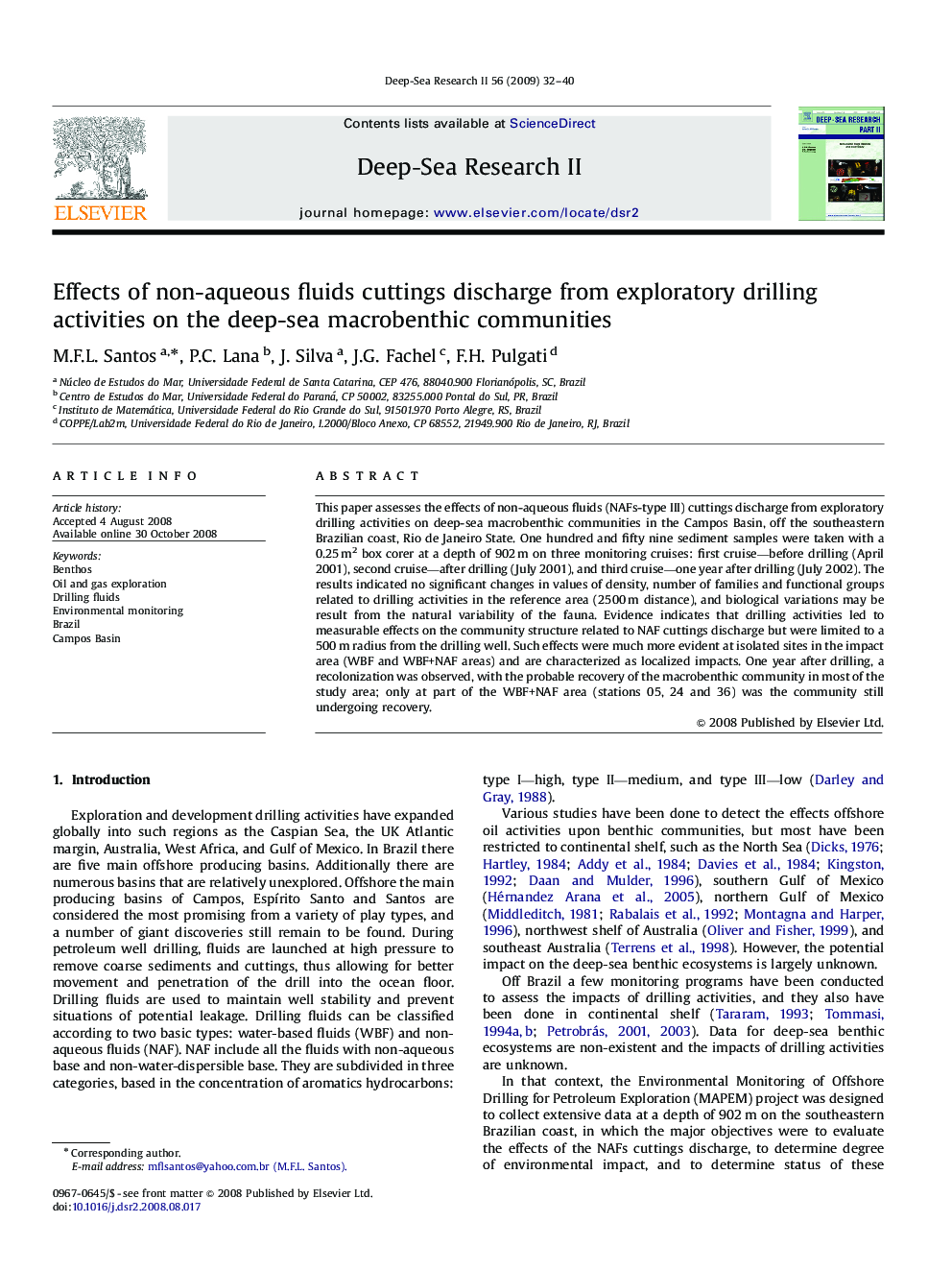| Article ID | Journal | Published Year | Pages | File Type |
|---|---|---|---|---|
| 4537839 | Deep Sea Research Part II: Topical Studies in Oceanography | 2009 | 9 Pages |
Abstract
This paper assesses the effects of non-aqueous fluids (NAFs-type III) cuttings discharge from exploratory drilling activities on deep-sea macrobenthic communities in the Campos Basin, off the southeastern Brazilian coast, Rio de Janeiro State. One hundred and fifty nine sediment samples were taken with a 0.25Â m2 box corer at a depth of 902Â m on three monitoring cruises: first cruise-before drilling (April 2001), second cruise-after drilling (July 2001), and third cruise-one year after drilling (July 2002). The results indicated no significant changes in values of density, number of families and functional groups related to drilling activities in the reference area (2500Â m distance), and biological variations may be result from the natural variability of the fauna. Evidence indicates that drilling activities led to measurable effects on the community structure related to NAF cuttings discharge but were limited to a 500Â m radius from the drilling well. Such effects were much more evident at isolated sites in the impact area (WBF and WBF+NAF areas) and are characterized as localized impacts. One year after drilling, a recolonization was observed, with the probable recovery of the macrobenthic community in most of the study area; only at part of the WBF+NAF area (stations 05, 24 and 36) was the community still undergoing recovery.
Related Topics
Physical Sciences and Engineering
Earth and Planetary Sciences
Geology
Authors
M.F.L. Santos, P.C. Lana, J. Silva, J.G. Fachel, F.H. Pulgati,
